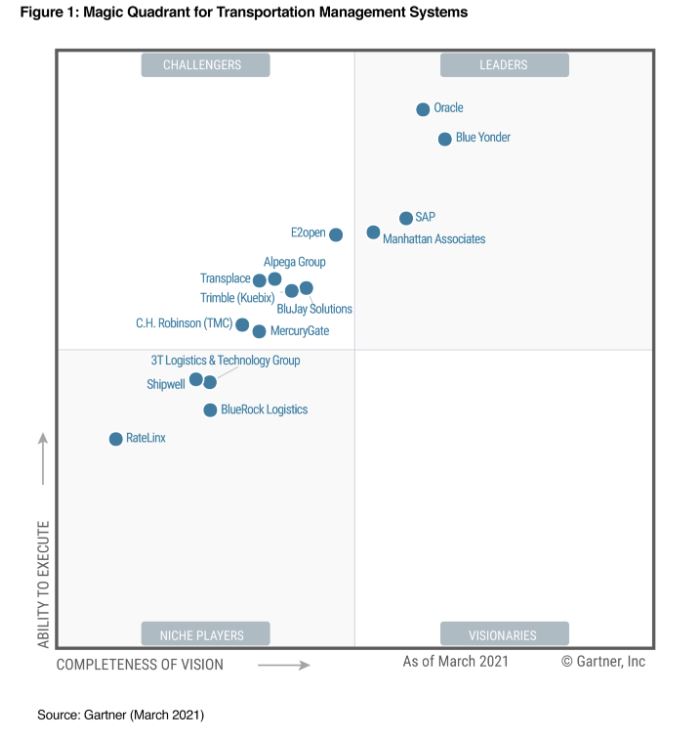
Logistics and supply chain businesses, big or small, rely heavily on digital solutions to manage their transportation needs efficiently. Amongst the various software products, Transportation Management System (TMS) and Fleet Management System play vital roles in streamlining operations and optimizing resources.
In this article, we will delve into the intricacies of TMS and Fleet Management System, highlighting their key differences and helping you make informed decisions for your transportation management business in Singapore.
What is Transportation Management System (TMS)?
A TMS is a comprehensive software solution designed to optimize and streamline transportation operations. This can be applied to supply chain operations across different transport modes and geographic regions.
For instance, TMS usually comes with a robust set of features that generally empowers businesses to:
1. Efficiently plan routes
2. Optimize loads
3. Select carriers
4. Manage drivers
5. Perform delivery confirmation and audits
6. Track shipments in real-time
By implementing a TMS, businesses can improve the visibility of their shipment, manage and process customer orders, reduce fuel consumption, optimize driver and vehicle utilization and enhance customer service. These benefits will ultimately translate to increased operational efficiency and profits.
Based on research from Gartner in 2021, some examples of leading TMS providers globally include Oracle, Blue Yonder, SAP and Manhattan Associates. However, although these systems are very comprehensive in terms of features, they are also often too expensive to implement especially for small and medium enterprises in Singapore with limited resources.

What is Fleet Management System?
On the other hand, Fleet Management Systems focus primarily on managing and maintaining a company’s fleet of vehicles. They are a sub-set of software solutions focusing that provide capital asset maintenance functions known as Enterprise Asset Management (EAM) software.
Fleet Management Systems typically offer functionalities such as:
1. Vehicle tracking via telematics and GPS
2. Maintenance scheduling
3. Fuel management
4. Driver performance monitoring
Businesses can optimize fleet utilization, reduce downtime, and enhance overall fleet performance with digital solutions. Some of the leading players globally include Fleetio, Trimble and Geotab.
Transportation Management System vs. Fleet Management System: Key Differences
While both TMS and Fleet Management Systems contribute to efficient logistics and supply chain operations, they differ in terms of scope and focus.
As highlighted above, TMS primarily focuses on managing the end-to-end transportation process. In contrast, Fleet Management Systems concentrate more on managing the fleet itself, including vehicle tracking, maintenance, fuel efficiency, and driver performance.
Furthermore, TMS targets a wide range of industries, including manufacturing, retail, and distribution, where transportation plays a pivotal role. On the other hand, Fleet Management Systems are typically utilized by businesses that own and operate their own fleet of vehicles, such as vehicle rental companies, trucking operators, and express delivery providers.
Integration of Transportation Management System and Fleet Management System
Although the two systems are different, it’s worth noting that it is possible to integrate both TMS and Fleet Management Systems to enhance operational efficiency. By leveraging the benefits of both systems, businesses with unique requirements can optimize transportation planning, monitor fleet performance, and streamline end-to-end logistics processes.
For example, transportation or logistics businesses in Singapore tend to operate their own vehicle fleet. For these businesses, it will make strategic sense to adopt both solutions as they deliver transportation services with own fleet assets.
However, integration may pose challenges, including data synchronization and system compatibility. Therefore, careful planning and consideration are crucial to ensure a successful integration that maximizes the benefits of both systems. Ideally, businesses should work with established logistics software providers who can offer a comprehensive ERP system instead of buying separate solutions.
Implementation Best Practices for TMS and Fleet Management Systems
It is important to note that TMS and Fleet Management Systems are merely digital tools to enable your business. Businesses can consider the following best practices to bring out the most from these digital solutions:
1. Utilize data analytics and reporting:
Leverage the power of data to identify trends, inefficiencies, and opportunities for improvement. Ideally, a good system should allow businesses to analyze transportation metrics and generate insightful reports to drive informed decision-making.
As an example, the TMS can help you identify the productivity metrics and road safety record of your drivers, which will allow you to implement a performance-based bonus plan to motivate and retain good drivers.
2. Streamline communication and collaboration:
Foster effective communication between stakeholders, including suppliers, carriers, and customers. Utilize collaborative platforms and automated communication channels to ensure seamless information flow.
For instance, growing e-commerce deliveries have changed consumers’ expectations of last-mile delivery. A good TMS can provide a customer portal that can allow consumers to track and notify the status of their delivery in real-time, resulting in better customer satisfaction.
3. Implement efficient route planning and optimization:
Vehicle routing is one of the most difficult challenges for transport management given the multiple constraints that need to be considered, such as traffic conditions, delivery time, driver availability, vehicle load etc.
It is useful to utilize advanced routing algorithms to minimize miles travelled, reduce fuel consumption, and improve overall efficiency. You can leverage real-time traffic and weather data to make dynamic adjustments and avoid delays.
Overall, the transportation management landscape is poised to witness significant advancements going forward. Advancements in technology and automation, such as artificial intelligence and machine learning, will further enhance route optimization technology.
Conclusion: A TMS or Fleet Management System Will Revolutionize Your Transportation or Logistics Business
TMS and Fleet Management Systems are indispensable tools for Singapore businesses seeking efficient logistics operations. While TMS focuses on managing the transportation process, Fleet Management Systems concentrate on optimizing fleet performance. In order to maximize these tools, businesses should consider utilizing data for analytics, streamline collaboration and integration with other stakeholders, as well as implement advanced technologies to optimize route planning decisions.
By understanding the key differences and aligning them with your business requirements, you can choose the right solution to streamline your operations, reduce costs, and improve customer satisfaction.